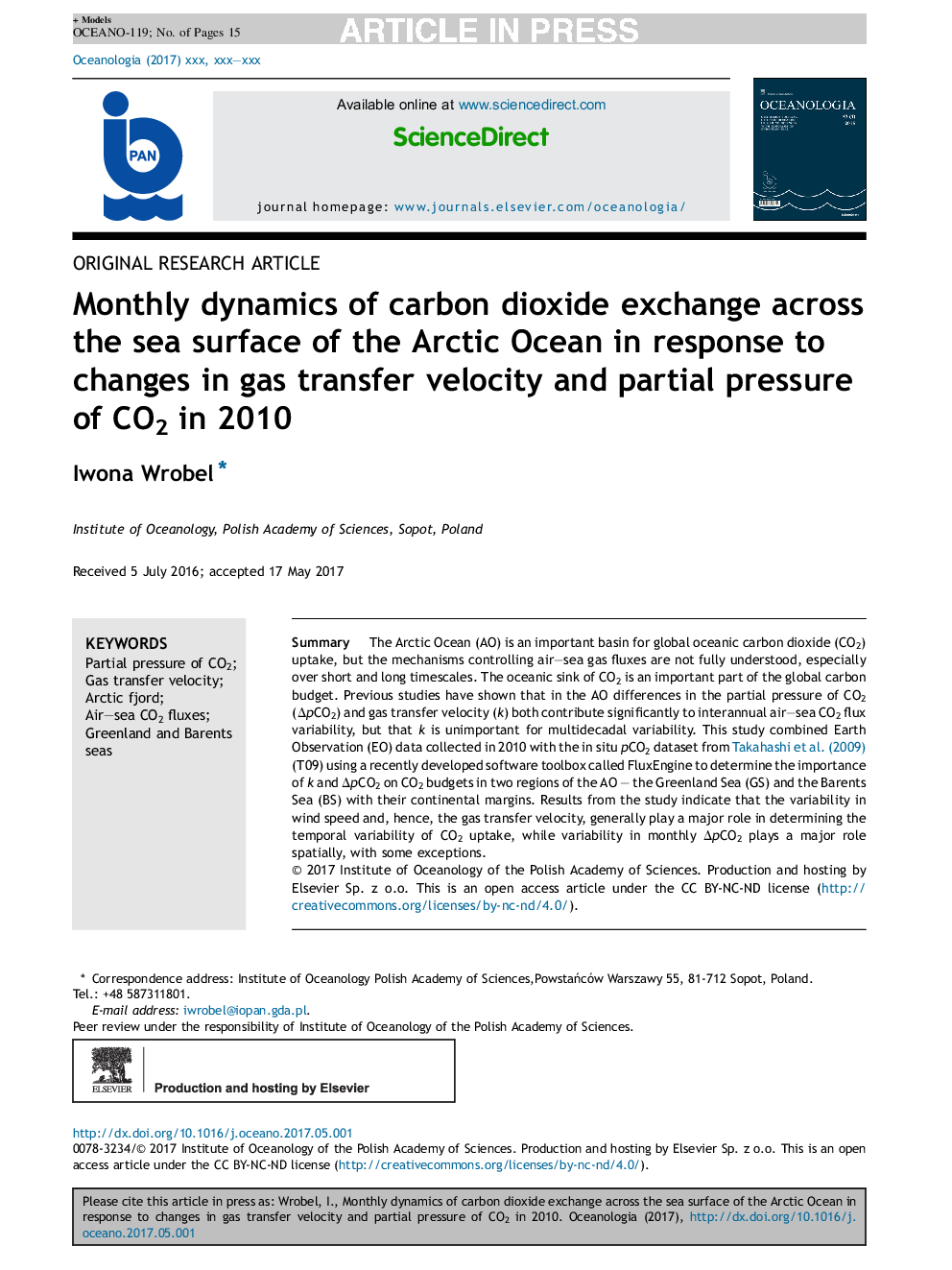| Article ID | Journal | Published Year | Pages | File Type |
|---|---|---|---|---|
| 8399925 | Oceanologia | 2017 | 15 Pages |
Abstract
The Arctic Ocean (AO) is an important basin for global oceanic carbon dioxide (CO2) uptake, but the mechanisms controlling air-sea gas fluxes are not fully understood, especially over short and long timescales. The oceanic sink of CO2 is an important part of the global carbon budget. Previous studies have shown that in the AO differences in the partial pressure of CO2 (ÎpCO2) and gas transfer velocity (k) both contribute significantly to interannual air-sea CO2 flux variability, but that k is unimportant for multidecadal variability. This study combined Earth Observation (EO) data collected in 2010 with the in situ pCO2 dataset from Takahashi et al. (2009) (T09) using a recently developed software toolbox called FluxEngine to determine the importance of k and ÎpCO2 on CO2 budgets in two regions of the AO - the Greenland Sea (GS) and the Barents Sea (BS) with their continental margins. Results from the study indicate that the variability in wind speed and, hence, the gas transfer velocity, generally play a major role in determining the temporal variability of CO2 uptake, while variability in monthly ÎpCO2 plays a major role spatially, with some exceptions.
Related Topics
Physical Sciences and Engineering
Earth and Planetary Sciences
Oceanography
Authors
Iwona Wrobel,
